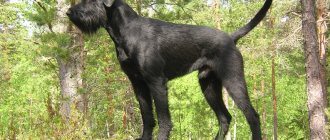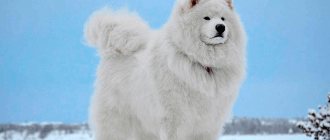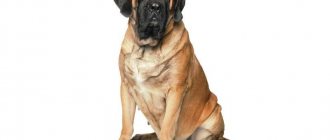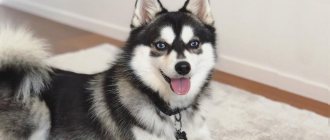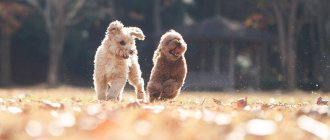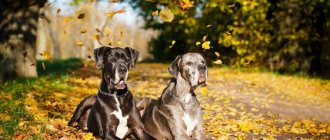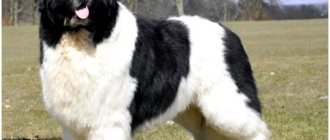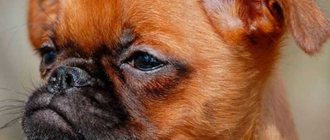The French Water Dog is a rare species of medium-sized animal. Barbets are considered to be ancient hunting dogs that were mostly used by kings, sailors and peasants for hunting. Today these are funny and good-natured four-legged pets, similar to plush toys or poodles that have run away from a haircut. They can become wonderful family dogs, loyal friends and companions.
The Barbet is a kind and cheerful friend who has natural hunting instincts. In most cases, they are obedient and efficient, but at the same time they never forget about their independence and determination. Children love them for their luxurious appearance, pleasant fur and friendliness, and dogs are accustomed to responding in kind to kids.
Origin
The history of the appearance of the breed dates us back to the ancient Moors, who lived in the Pyrenees in the 7-8 century AD. They kept and raised the ancestors of the Barbet herding dogs. Subsequently, representatives of the species were brought to Central Europe and France, where interbreeding with local animals occurred. This is how modern French water dogs appeared.
Barbets were mentioned in writings in the early and late Middle Ages. For example, in 1570, representatives of the species were included in a treatise that covered the topic of classification of dog breeds. Experts called these dogs everyone's favorites, always in the center of attention. French monks used this aristocratic breed to hunt wild ducks. In addition to their hunting qualities, the animals worked as sailors.
In the 20th century, cynologists and dog breeders actively improved representatives of the breed. This process was divided into several directions for breeding different individuals, but at the end of the 20th century, crossing was already carried out between the resulting representatives. This made it possible to obtain impeccable results, which are proven by various international and regional exhibitions, where barbets receive prizes.
Barbet. Video
The Barbet dog belongs to the group of gun hunting dogs. This ancient French breed has been known since the fourteenth century. Its ancestors were ancient water dogs.
The barbet is very similar to the poodle: the same curly coat, sometimes curled into cords, which is impermeable to water and also good protection from the cold. They can also be compared to a plush toy. Barbé coat colors can be black, fawn, chestnut, grey, fawn, white and mixed. Sometimes there are marks. These dogs are friendly, sociable and very smart.
Cheerful pets will not let their owner get bored. They are obedient, efficient, but, at the same time, decisive and independent. They like the company of children and will happily play with the little ones. They also get along well with animals. They are excellent hunters when it comes to waterfowl. Thanks to a well-developed instinct for retrieval, they serve shot game, but can also be excellent helpers on the ground.
Description of the breed
Barbets are medium-sized dogs with close-fitting fur. This cover practically does not shed and allows you to swim even in frosty water. Four-legged pets demonstrate the following exterior features:
| Appearance | Characteristics |
| Head. | Round, wide skull. The transition from forehead to muzzle is clearly defined. The muzzle is rectangular. |
| Jaw. | The teeth are powerful, the incisors stand out in a row. |
| Ears. | Flat and long, set low on the head. Hanging, framed with long hair. |
| Eyes. | Round shape, small size. In most cases, brown in color. The eyes are hidden behind the bangs. |
| Body. | Powerful, chest wide and well developed. The back is straight, the ribs are convex, the croup and loin are rounded. The neck is strong and short. |
| Paws. | The limbs are strong and long, with well-developed muscles. The paws are wide and rounded. There are small membranes between the toes for comfortable swimming. |
| Tail. | Low rise, curled at the tip. Doesn't rise high above the back. |
| Wool. | The cover is long, thick, hard and wavy. Can twist into rings and form bundles. Due to its sufficient thickness, the wool allows you to protect the animal’s body from dampness and cold. |
Such parameters allow dogs to swim well and make it easier for them to stay in river and sea water.
Barbet care
Because Barbets have long, dense, curly hair, daily grooming is an absolute must;
they can become tangled, matted, and accumulate debris. Every day, gently comb your Barbet's coat, using your fingers to untangle any tangles. Some Barbet owners prefer to keep their dog's coat short to make grooming easier. If you decide to trim your Barbet's coat, leave about 1cm long on the body and a little more on the head, chin and tail.
You can regularly trim the hair between your dog's eyes to help him see more clearly, as well as the hair around the ear canal. If you are not comfortable trimming your dog's fur, contact a groomer.
Inspect your Barbet's ears regularly and gently remove any dirt or debris with a soft cotton cloth. If your dog's ears are red and sore, excessively dirty, or smell strange, make an appointment with your veterinarian. These may be signs of infection that will require treatment.
All breeds of dogs are susceptible to periodontal disease if they do not receive proper dental care. Brushing your teeth daily—at least once a week—can prevent the development of oral diseases.
You can supplement your brushing with dental chews, but these are empty calories, so it's important to give them in moderation. Dental treatment should never be the only form of dental hygiene you use.
Barbets have higher energy levels and exercise needs, and they are very intelligent dogs—so it's important to keep them busy and entertained.
They might enjoy dexterity challenges, puzzles, or other challenging games. Barbets are extremely intelligent, but can be stubborn. They need obedience training, as well as regular exercise and entertainment.
Pros and cons of the breed
- good-natured;
- get along well with children and other pets;
- hardy;
- movable;
- love water;
- good health, strong immunity;
- high intellectual abilities;
- smart;
- easy to train.
- Suitable for active people only;
- need regular walks, training and active games;
- constant care of the coat is required, including grooming and trimming;
- can only live in large apartments where there is room to spread out;
- A proper diet is necessary.
Mating of French water dogs
In principle, the female is ready to meet a male and for her first heat, but you can’t breed so early!
The ideal days for mating are considered to be from 11 to 15 from the start of estrus. It is best to breed a female by the age of 2, just like males. Under no circumstances should males be bred before two years of age. Early sexual activity will not improve the health of either the dog or the offspring.
- Before mating, animals need to be given a good walk, but should not be fed. It is better to introduce dogs on neutral territory so that they can get to know each other and run around, and then lead them to the male dog’s territory.
- Matings should always be carried out only in the territory of the dog. Actually, an act of love can also happen during dating, so don’t interfere with the process.
So, you're in male territory. Most likely, no intervention will be required, and the bitch, having played enough with the male, will allow a persistent suitor to mount.
If one of the partners for mating is small in relation to the other, then you can place a pillow under the hind legs or, if the bitch is shorter, place her belly on a bent knee. This advice is more relevant for small breeds. Just don’t try to bend the bitch’s paws so that the dog can reach her.
After ejaculation, mating occurs. The male can be on the bitch or stand with his back to her. The animals will figure it out on their own. However, if the lady tries to break free or lie down, do not allow her, hold her back a little. Also try not to scare the dogs.
It happens that after mating, mating does not occur and the male immediately loses interest in the female.
Be sure to carry out a control mating after 24-48 hours.
Breed Features
The French Water Dog is naturally a cheerful, friendly, obedient and intelligent animal. It can be easily trained, which allows barbettes to participate in various auditions and competitions. Four-legged pets have an easy-going and affectionate character. They are always ready to come to the aid of a friend, the rest of the household with whom they have developed friendly relations.
Representatives of the breed prefer active walks and training. If this opportunity is absent, the animal will wither and lose its physical strength and endurance. Therefore, they are ideal for active people, regardless of age. In addition to constant walks and training, four-legged pets need attention from the owner.
These audience favorites prefer to be pampered and appreciated. Therefore, dog breeders recommend planning your own day in such a way that you have enough energy for your tailed friend. Lack of attention negatively affects the psycho-emotional health of the animal.
General health problems
Although Barbets are generally healthy dogs, there is no guarantee that they will not develop certain diseases. It's important to know the signs and symptoms so you can seek proper help if your dog shows signs of any of these conditions:
- Longing: Barbets love their people and constant attention, so they can become very bored and anxious when separated. Excessive drooling, accidents at home, and rowdy behavior may be signs of this condition. Talk to your veterinarian about ways to relieve depression through exercise or, in severe cases, medication.
- Hip or elbow dysplasia: This condition affects the joints in a dog's legs and can lead to severe pain and weakness. Dysplasia is an inherited condition, so it is important to ask your breeder for health certificates. Although most cases of dysplasia are genetic, injury and excessive weight gain can also lead to its development.
- Epilepsy: Characterized by frequent seizures, epilepsy is a condition that affects the electrical currents in your dog's brain. Signs of seizures include collapse, whole body convulsions, and foaming at the mouth. If your dog has any of these symptoms, contact your veterinarian immediately for treatment.
Nutrition
In most cases, nutritional problems do not arise. French Water Dogs can be fed high-quality premium dry food or natural products. If the choice falls on a natural diet, it should consist of:
- protein products;
- meat (lamb or beef);
- vitamin and mineral complexes;
- cereals;
- vegetables;
- bone meal;
- dairy dishes.
Dry food can be soaked in broth or water. This will make it tastier and more nutritious for your four-legged pet. Larger portions can be given during the hunting season and in winter. It is imperative that clean drinking water be made freely available.
Premium dry dog food
Rating
Holistic dog food
Rating
Small breed dog food
Rating
Tips for choosing puppies
The popularity and rarity of dogs of this breed also affects the cost. A barbet puppy will cost the new owner from 20 to 40 thousand rubles. The cost is influenced by the pedigree, titles of the parents, and the characteristics of the baby himself.
It is better to contact specialized nurseries for a Barbet puppy - this is a guarantee of the purity of the breed. Buying second hand risks purchasing a crossbreed or a puppy with problems.
What to look for when choosing a Barbet puppy:
- healthy appearance;
- activity and curiosity;
- fatness;
- absence of discharge from the eyes, ears, nose;
- contact.
Barbet will not let you get bored, giving love and affection, but will also demand reciprocal feelings.
Feeding
Another feature of Barbeusieux chicken is the need for clay. It is this that allows chickens to form a correct and strong backbone. Scientists suggest that this is why the Barbeziers at one time were able to survive only in one French province with clay-calcium lands. It is better to place the clay separately, like a bowl of shells, so that each chicken can peck as needed.
Otherwise, Barbezier’s diet will not be too different from other birds. This can be either high-quality balanced feed or a home-made “mash”. When preparing food yourself, use a mixture of:
- millet;
- oats;
- barley;
- bran;
- corn, peas or chickpeas;
- sunflower cake;
- salt;
- fine gravel, shells or coarse sand.
In summer, the content of vegetables and grass in the diet can reach 50%. In winter, dry nettle is a good substitute for grass. If its reserves are insufficient, then you can use granulated herbal granules, previously soaked in water.
| Corn | 30 |
| Wheat | 20 |
| Barley | 21 |
| Soybean meal | 14 |
| Sunflower cake | 5 |
| Soybean oil or fusa | 1 |
| Premix | 2 |
| Calcium | 7 |
Feed for barbezier chickens
| Wheat | 30 |
| Barley | 50 |
| Sunflower cake | 3 |
| Yeast | 3 |
| Fish flour | 3,3 |
| Herbal meal | 7 |
| Premix | 2,2 |
| Calcium | 1,5 |
The easiest way is to mix the ingredients of the feed in advance. It is better for chickens if their food is constant. Therefore, when changing the composition of the grain mixture, you should not switch to a new one abruptly. Over the course of several days, you can combine two types of food, gradually increasing the percentage of the new composition.
Mixing feed
Healthy
In a small apartment, these dogs do not feel comfortable, and the inactive way of living leads to the fact that active dogs begin to “wither” in front of their eyes. They can make you sick, although the breed will remain healthy.
Dogs that are susceptible to illnesses that are transmitted during recessions, therefore, when purchasing a tsucen, it is imperative to become familiar with the data of the fathers. If an illness occurs in one of them, it can be 100% blamed for it to be passed on to offspring. In addition to the already known ear ailments, dogs may become ill: hernias, epilepsies, dysplasia of the hip joint and so on.

